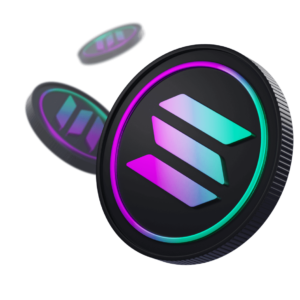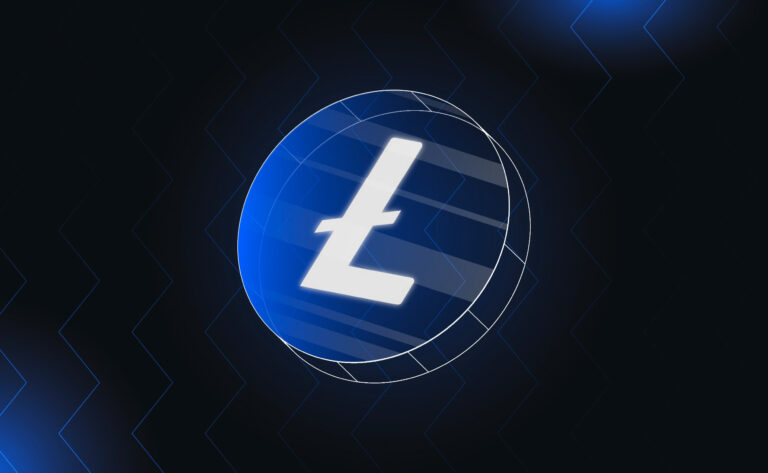Since its inception, the blockchain industry has experienced numerous changes. Some older assets have lost relevance, making way for new projects. Despite this, a few of the market’s “veterans” continue to hold top positions in market capitalization. One of these is Litecoin (LTC), which we’ll explore in this material.
What is Litecoin (LTC)?
Litecoin is a cryptocurrency operating on a decentralized, open-source network of the same name, with a capped supply of 84 million LTC. It is regarded as one of Bitcoin’s earliest forks due to its modified codebase. LTC is also one of the earliest altcoins.
Litecoin’s History
On October 7, 2011, Charlie Lee (then a Google employee) released Litecoin’s open-source code on GitHub. Two days later, he announced plans to create a new blockchain on the Bitcointalk forum.
The network officially launched on October 13, 2011. Lee saw the need for an alternative to Bitcoin, which faced significant challenges with transaction speed. In his spare time, he improved Bitcoin’s code, ultimately resulting in Litecoin.
Litecoin gained popularity among users, but in 2013, Lee took a leadership role at Coinbase, reducing his involvement in the project. In 2017, he resigned from Coinbase and founded the Litecoin Foundation to fully support the blockchain.
Litecoin’s similarity to Bitcoin enables the adoption of shared enhancements. An example is Segregated Witness, which Litecoin integrated on May 10, 2017, ahead of Bitcoin.
The latest major update, Mimblewimble Extension Blocks, occurred on May 20, 2022, allowing confidential transactions where the transfer amount is visible only to the sender and recipient.
How Does Litecoin Work?
As a fork of Bitcoin, Litecoin uses the Proof-of-Work (PoW) consensus algorithm to ensure the blockchain’s decentralized operation.
While Bitcoin employs SHA-256 encryption requiring GPUs or specialized equipment (ASICs) for mining, Litecoin utilizes the Scrypt algorithm. Lee designed LTC mining to be user-friendly, allowing for more efficient CPU mining.
Litecoin’s primary advantage lies in its speed. The network can handle 54 transactions per second (compared to Bitcoin’s seven), and block creation takes only two and a half minutes, compared to Bitcoin’s ten, enhancing throughput.
The network also offers comparatively low transaction fees (averaging $0.03), establishing it as an alternative to Bitcoin.
How Can Litecoin Be Used?
Litecoin does not support smart contracts, so its primary role is as a payment system. Some merchants accept LTC for payments, including cold wallet providers (Ledger, Trezor), charities (Against Malaria Foundation, American Red Cross), and clothing retailers (Ralph Lauren).
In September 2021, there was news about a Litecoin-Walmart partnership, but this was later revealed to be false.
Litecoin Mining
Litecoin’s network is maintained by miners who calculate the correct hash for a transaction block. The first miner to do so can add the block to the blockchain and receive an LTC reward.
Initially, the reward for a mined block was 50 LTC, but it halves approximately every four years. Litecoin has experienced three halvings, with the latest on August 2, 2023, reducing miner rewards to 6.25 LTC.
Note: This process will continue until the 84 million LTC supply cap is reached. As of this writing, miners have mined 88.24% of all LTC. Based on current network characteristics, the full supply is expected by 2142.
While Litecoin mining is independent, Auxiliary Proof-of-Work (AUXPoW) was added in 2014, enabling joint mining with Dogecoin. At that time, DOGE faced price declines and waning miner interest, prompting Lee to propose parallel LTC and DOGE mining with shared resources.
Should You Buy Litecoin? Expert Opinions
At present, LTC trades between $68 and $72. Traders and investors have mixed forecasts for the asset’s price movement. Some community members even speculate that LTC’s price could reach $12,000 within a few years.
In the short to medium term, some traders believe the price may reach the resistance level at $122. In a negative scenario, a price drop to $48 is anticipated. However, the positive outlook remains the preferred forecast.
Conclusions
Litecoin is a unique example of a Bitcoin fork that surpasses the original cryptocurrency in many ways, particularly in transaction processing speed. Despite this, the asset’s price doesn’t reflect these advantages.
According to Charlie Lee, Litecoin is “silver,” while Bitcoin is “gold.” Even from the outset, the project’s creator anticipated that Litecoin would remain in the shadow of its “older sibling.”
FAQ
What makes Litecoin better than Bitcoin?
Litecoin has the advantage of transaction processing speed, handling 54 transactions per second compared to Bitcoin’s seven. Additionally, the average transaction fees are about 50 times lower than those of its competitor.
What is Litecoin used for?
The cryptocurrency is designed as a convenient payment method for transactions, with its network functioning as a payment system.
When will the last Litecoin be mined?
With the current network characteristics, the last Litecoin is expected to be mined in the year 2142.

